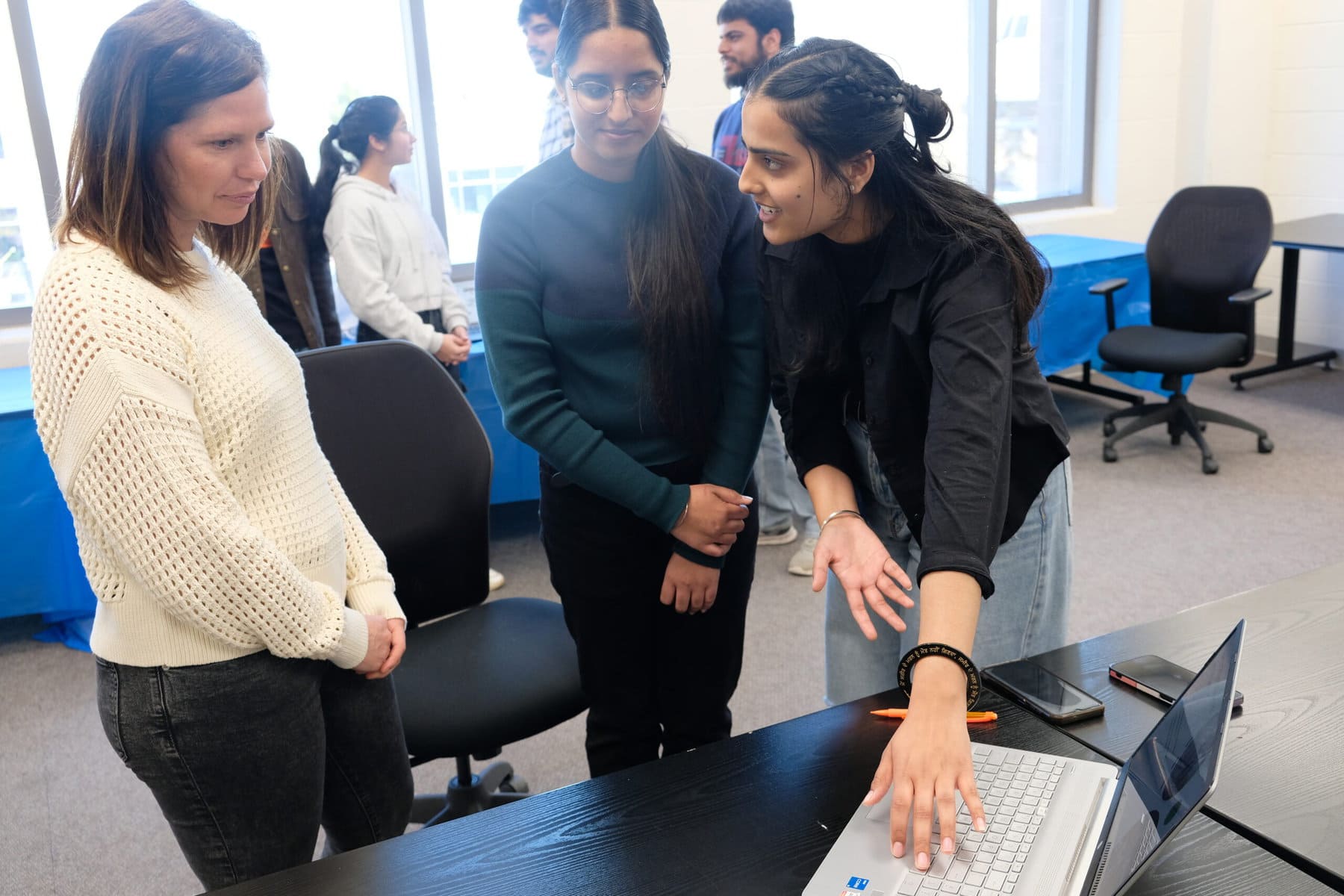Students at Niagara College’s Daniel J. Patterson campus in Niagara-on-the-Lake went from learners to experts Monday, April 15 in a showcase of experiential learning and mutual benefit with a local business.
As part of their advanced communications class, students from the horticulture technician, greenhouse technician, and landscaping programs were tasked to come together in small teams to come up with solutions to one of two problems facing NOTL’s Honey Fields bee farm. The issues at hand: pest control and comfort at the farm’s new open space for visitors.
The goal for instructor Tania Fera-Gent was to activate the student’s creative minds to find solutions, but to also use what they have learned from her class to be confident and comfortable exchanging ideas with groups and/or individuals using various communications tools, such as visual and audio presentations.
After weeks of preparation and research, students set up on a second floor classroom and presented their findings to fellow students, college administration and Erin Rowaan, owner of Honey Fields.
“We love working with the community and having the opportunity to be here. To see them so invested in something like a honey bee is pretty cool,” said Rowaan.
She was particularly impressed with how well-versed the students were with the of the challenges facing the local bee and honey industry.
“A lot of them focused on the varrora mite, which is one of the biggest pests that we have to control when we are working with bees. It is something we have to stay on top of or we could lose all of our hives. It was really interesting to see the different ideas,” she adds.
“They have the methods that we generally chose to use, but something new that a lot of them mentioned was having mite-resistant colonies. It is a newer thing just coming into the bee industry now. It is trying to use genetics to produce bees that are naturally resistant to the mite as opposed to using some of the other chemical options which can be tricky to balance because you are trying to kill an insect on an insect.”
Harmanpreet Kaur, 23, had his mind on the ills of chemical use when creating his presentation. One of the practices he highlighted is applying homemade icing sugar to the frames of the hives. The sugar, which lacks the starch put into store-purchased icing sugar and therefore doesn’t clump in the humidity of the hive, disrupts the varroa mites’ ability to cling to bees due to the fine granules, preventing their suction on the bees.
David Atherton, dean of liberal studies at the campus, took in the presentations and was duly impressed with the students and very proud of the practical leaning methods being used by the college.
“Going from station to station, you can really see how much work the students have put into this, and you can see how much they appreciate us coming in to hear all about it,” he said. “But more importantly it is connecting with our local employers and our local farms and engaging them with these real-life student projects,” he added.
New to Honey Farms this year is a honey store on the company’s property. Plans are to use about an acre of the space to build a place for people to use and enjoy while visiting the farm.
If they chose to take on this aspect of the project, students were tasked – on instructions from the farm itself – to offer design plans for the space.
“Their criteria is for an educational space, to improve drainage, and to have a lunch area-type vibe,” said 18-year-old Mary McKellar, a horticulture student.
So, along with her project teammates, Anna DeDreu, Hannah Vandermuelen and Kylah Joseph, they did just that. The elements of their design and presentation consisted of the educational space “where the overhead shade and trees invite people and students to an environment that has an abundant amount of information on the product and production of honey.”
The public space “will have areas for people to enjoy lunch or rest under trees. Also, space to have quiet time enjoying the view of the oasis theme land when it is time for a break.”
On the tourism side of things “this property will have many attractions that people want to see. For example, to increase revenue by having flower fields being there for the bees and for people to take pictures.”
Vandermuelen can’t think of a better way to learn than the experiential methods being used by the college.
“The teachers are all super hands on and they care about us. They are introducing us to projects like this, giving us one-on-one time with employers and bringing people to the college to give us industry-based knowledge, not just book knowledge.”
Rowaan agrees with Vandermuelen’s assessment of the way the college is preparing students for life after graduation, and for the way those methods benefit business owners like herself.
“We value the relationship with Niagara College. I will certainly be implementing some of these (ideas),” she said.










